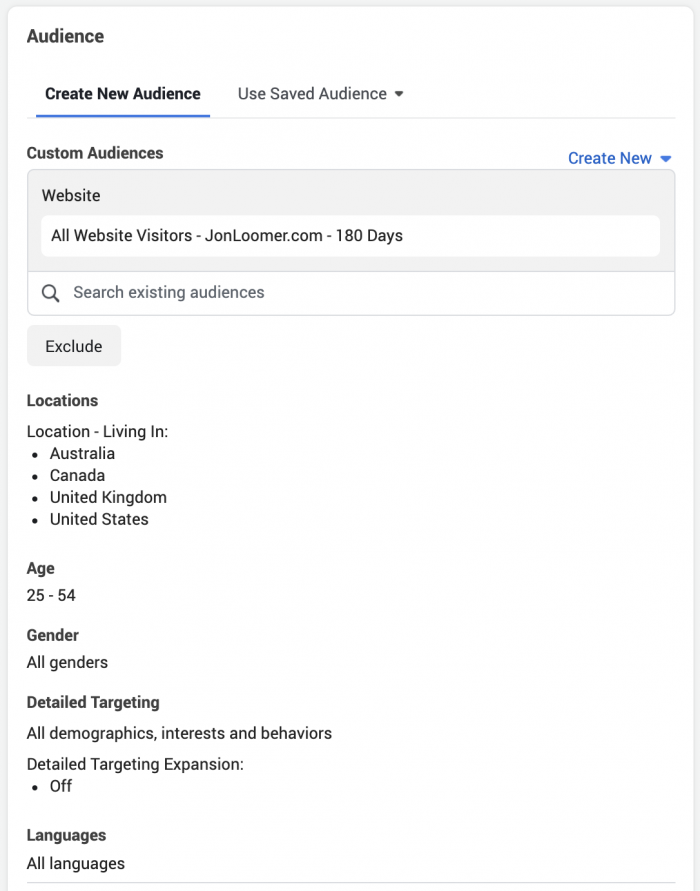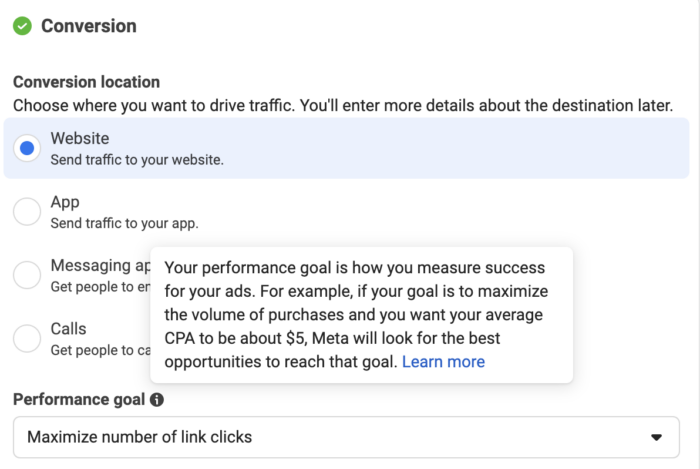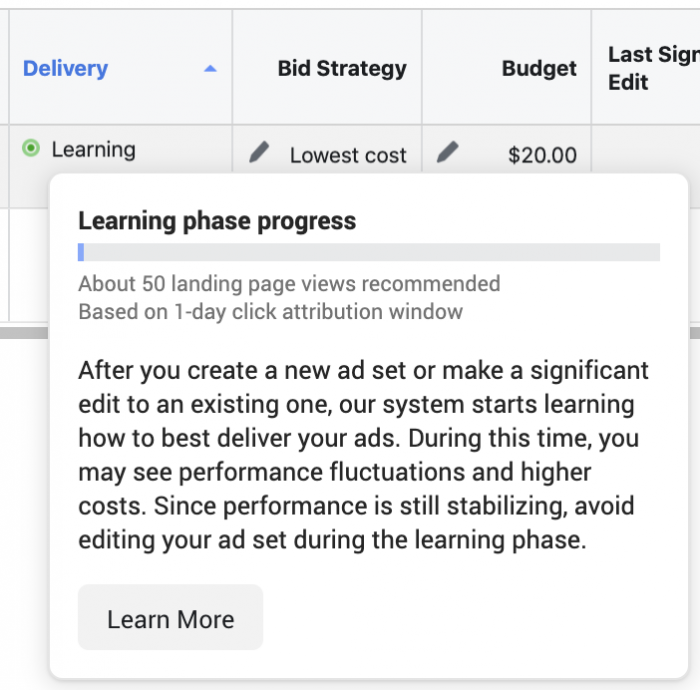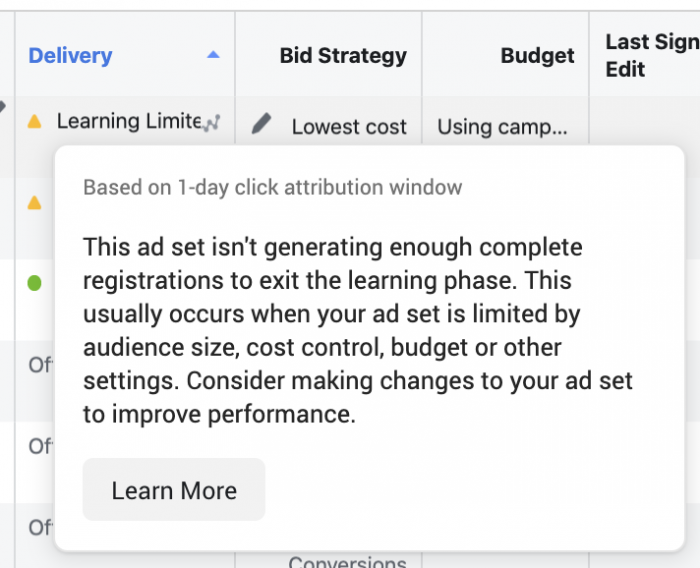When you run a campaign, how does Facebook decide who sees your ads and who doesn’t? The audience you select is just the start. Facebook optimization for ad delivery ultimately determines which people your ads reach.
In this post, we’ll talk about the following:
- The confusion about your ad audience
- How Facebook optimization works
- Optimization and objectives
- Optimization and the Learning Phase
Let’s do this…
No, You Can’t Reach Everyone
Many advertisers — particularly new ones — misunderstand how Facebook determines who sees your ads. You define your audience in the ad set…

The assumption among some advertisers is that the only obstacle to reaching a high percentage — if not all — of those people is budget. But, it’s just not true.
Throw all the budget at that ad set that you want. You won’t reach all of those people. Your audience selection is only the first step. Ultimately, you don’t want to reach everyone in that audience (in most cases).
How Facebook Optimization Works
Facebook optimization is meant to help you. While you set an initial “pool” audience, Facebook knows that some of the people within that audience are more likely than others to perform your desired action. As a result, Facebook will try harder to reach those quality individuals while avoiding those more likely to result in a wasted impression.
Of course, the “desired action” is key. Some people are more likely to click, others more likely to view a video, and still others more likely to convert. All of these audiences and qualities are different.
You choose this desired action by selecting a Performance Goal within your ad set.

Per Meta:
Your performance goal is how you measure success for your ads. For example, if your goal is to maximize the volume of purchases and you want your average CPA to be about $5, Meta will look for the best opportunities to reach that goal.
The pool of people changes depending on your optimization event. This is important.
Facebook has a ton of data for more than a decade of activity. The more people who use Facebook, the more data Facebook has. The more advertisers optimize for individual events, the more Facebook can tweak their algorithms. And a big part of all of this is the Facebook pixel, which helps define user activity on a website.
In theory: Optimize correctly, get more desired actions and save money on waste.
Optimization and Objectives
The optimization options available to you for a given campaign will depend upon the objective that you set at the campaign level. This is all meant to streamline the process and simplify it for the advertiser.
Following are the optimization options by objective…
Awareness
- Reach
- Ad Recall Lift
- Impressions
- ThruPlay Views
- 2-Second Continuous Video Views
Traffic
- Landing Page Views
- Link Clicks
- Daily Unique Reach
- Conversations
- Impressions
- Calls
Engagement
- Page Likes
- ThruPlay Views
- 2-Second Continuous Video Views
- Conversations
- Conversions
- Landing Page Views
- Link Clicks
- Daily Unique Reach
- Impressions
- App Events
Leads
- Leads
- Conversion Leads
- Conversions
- Landing Page Views
- Link Clicks
- Daily Unique Reach
- Impressions
- Calls
- App Events
- Conversations
App Promotion
- App Installs
- Value of Conversions (from app events)
- App Events
- Link Clicks
Sales
- Conversions
- Value of Conversions
- Landing Page Views
- Link Clicks
- Daily Unique Reach
- Impressions
- App Events
- Calls
If you are motivated to optimize a certain way that isn’t consistent with the objective that you’re using, pick a different objective!
You Get What You Optimize For
You need to fully understand what’s important to your business. Do not get lost in vanity or fluff metrics. You can get burned by optimization.
The most valuable possible user is someone who will buy from you. It’s difficult to dispute that.
All other actions are at least somewhat susceptible to algorithm manipulation. Let’s think about that…
If you optimize for link clicks, Facebook will show your ad to people most likely to click.
In this case, the algorithm doesn’t care about anything else. Facebook doesn’t care whether those users join your email list or buy from you. Facebook doesn’t even care whether they spent a single second on your website. The only concern is that they showed your ad to someone who performed your desired action.
That means that Facebook is going to show you results that the algorithm may think are successful. You got lots of clicks! Hurray! Facebook thinks you’ll be happy, too, since that’s what you said you wanted.
This spills over into placement selection. If you optimize for link clicks or landing page views, some placements (Audience Network, in particular) are much more susceptible to bots and click fraud than others. That means Facebook may then focus your budget to get those supposedly desired actions.
This can be an issue for virtually any action other than a purchase — even leads and other free “conversions” can be susceptible to low-quality traffic and bots.
My point isn’t that this is all a disaster. It’s not. Just make sure to do all you can to measure value and move beyond the surface level action.
Optimization and the Learning Phase
To properly optimize and get you the best results, Facebook needs volume. Facebook learns from early activity on your ads to tweak and optimize who sees your ads going forward.
Once you publish your campaign, ad delivery begins in the “Learning Phase.”

Theoretically, your campaign will perform better (optimally) once Facebook learns from early activities, you exit the learning phase, and your ad set is fully optimized.
The biggest obstacle to exiting the learning phase, however, is volume. Generally speaking, if you are unable to collect 25-50 optimized events during a seven day period, Facebook won’t be able to properly optimize. Your ad set will then display as “Learning Limited.”

Now, “Learning Limited” isn’t necessarily a death sentence. Many advertisers have reported getting acceptable results even after getting this message.
But know that volume helps Facebook optimize. It puts you in a better position to get the best possible results.
There are three primary drivers to getting this optimal volume:
- Audience Size
- Cost Per Optimization Event
- Budget
Let’s use an extreme when it comes to audience size and say you’re targeting an audience of 100 people. When Facebook optimizes for an event, your ad may be shown to 20 or 30 people. It doesn’t matter what you spend, you just won’t reach more people. And, if you can’t reach more people, you won’t get the necessary number of optimization events.
Similarly, your cost per conversion event could be as low as $.01 for something like engagement or video views but hundreds of dollars for a high-priced product or lead for a luxury item. You may be able to get the necessary optimization volume for low-priced events with a low budget, while it may be much more challenging to budget enough to get that volume if it costs $200 per event.
That leads us to budget. You may simply need to spend a little more to get that necessary volume, depending on the optimization event.
Optimization Options
But, maybe you don’t have that budget flexibility. The alternative is to optimize for something else that will lead to more volume at the same budget. The hope is that these events will continue to lead to the event you ultimately desire.
For example, instead of a purchase, you can optimize for an Add to Cart or View Content pixel event. These are things that happen more often, and it will cost less to get them. They are also actions your desired audience will perform prior to converting.
You also may run into a situation where you want to target your highest-value audience to complete a conversion. For example, you want to target those who hit a product landing page or added to cart without converting. That audience will be small for most websites, making it unlikely you’ll get enough volume to exit the learning phase.
What I’ve done in these cases is optimize for Reach or Daily Unique Reach. Here, you want to reach as many of the people in that audience as possible. There’s an assumption that all who performed this action are equally valuable — or close to equally valuable. In this rare situation, we don’t want Facebook to optimize, picking and choosing whom to reach. These optimization options will allow you to reach a larger percentage of that small audience.
Your Turn
I hope this post helps clarify how Facebook optimization for ad delivery works. Do you have any examples of how you use optimization?
Let me know in the comments below!






